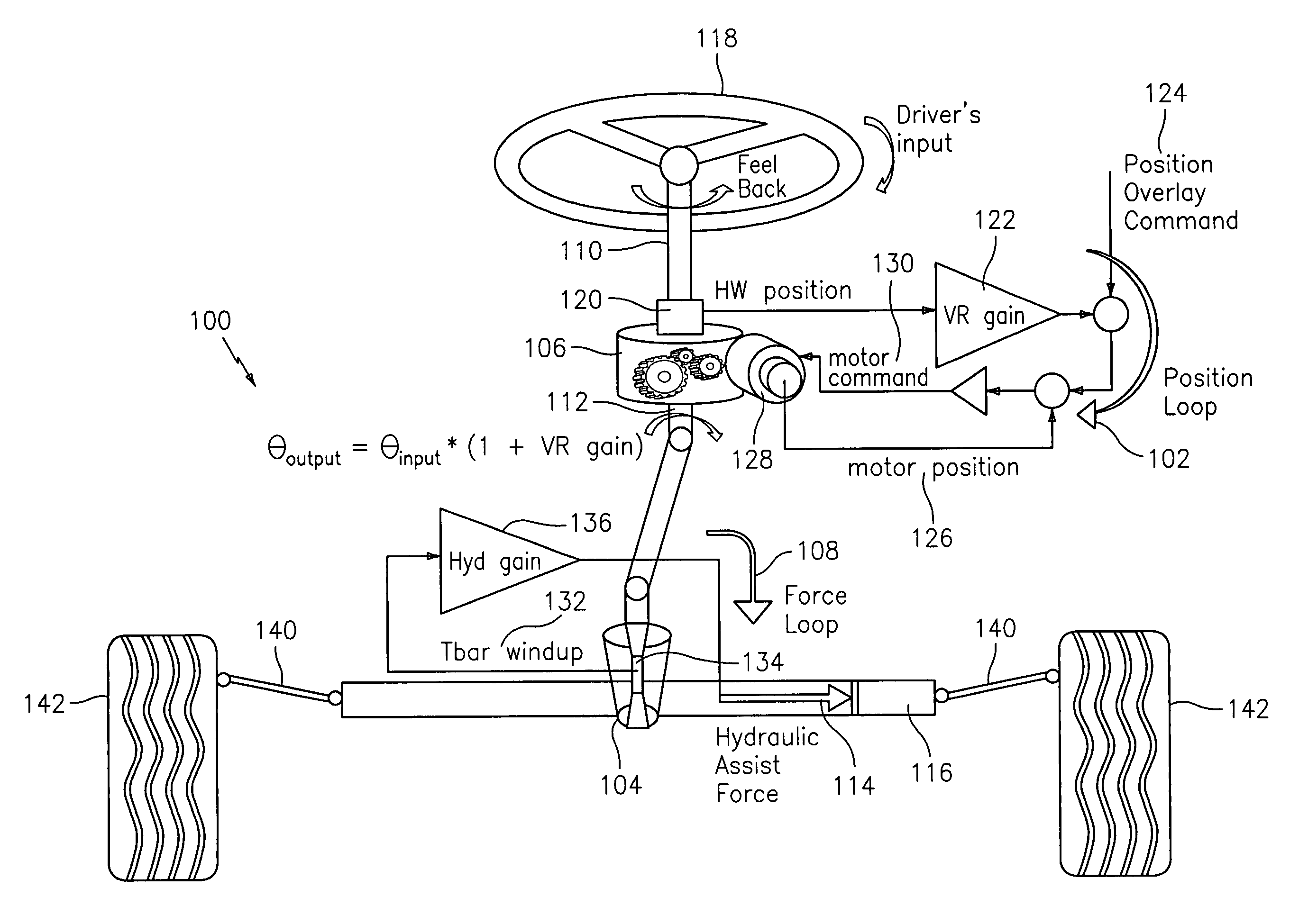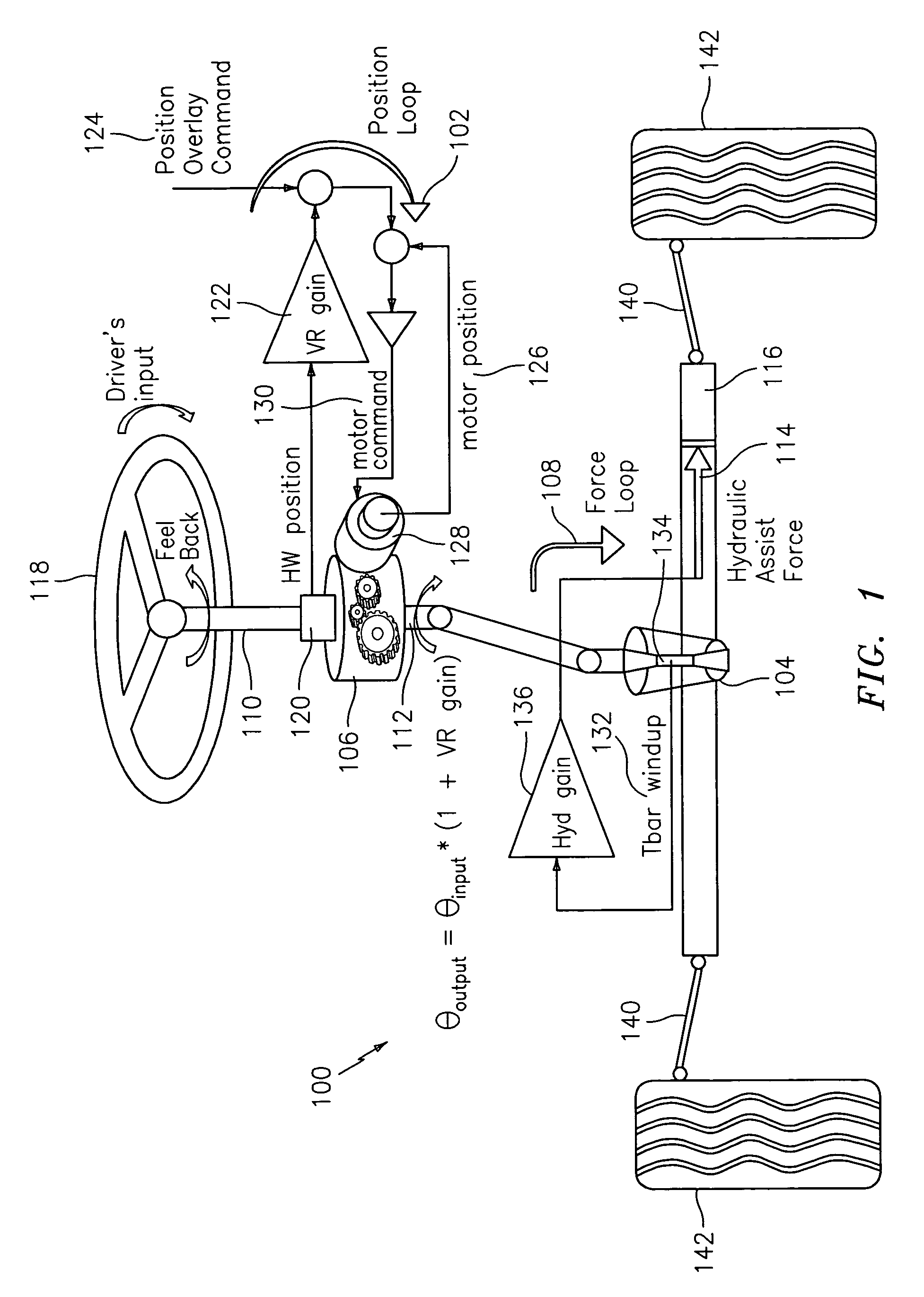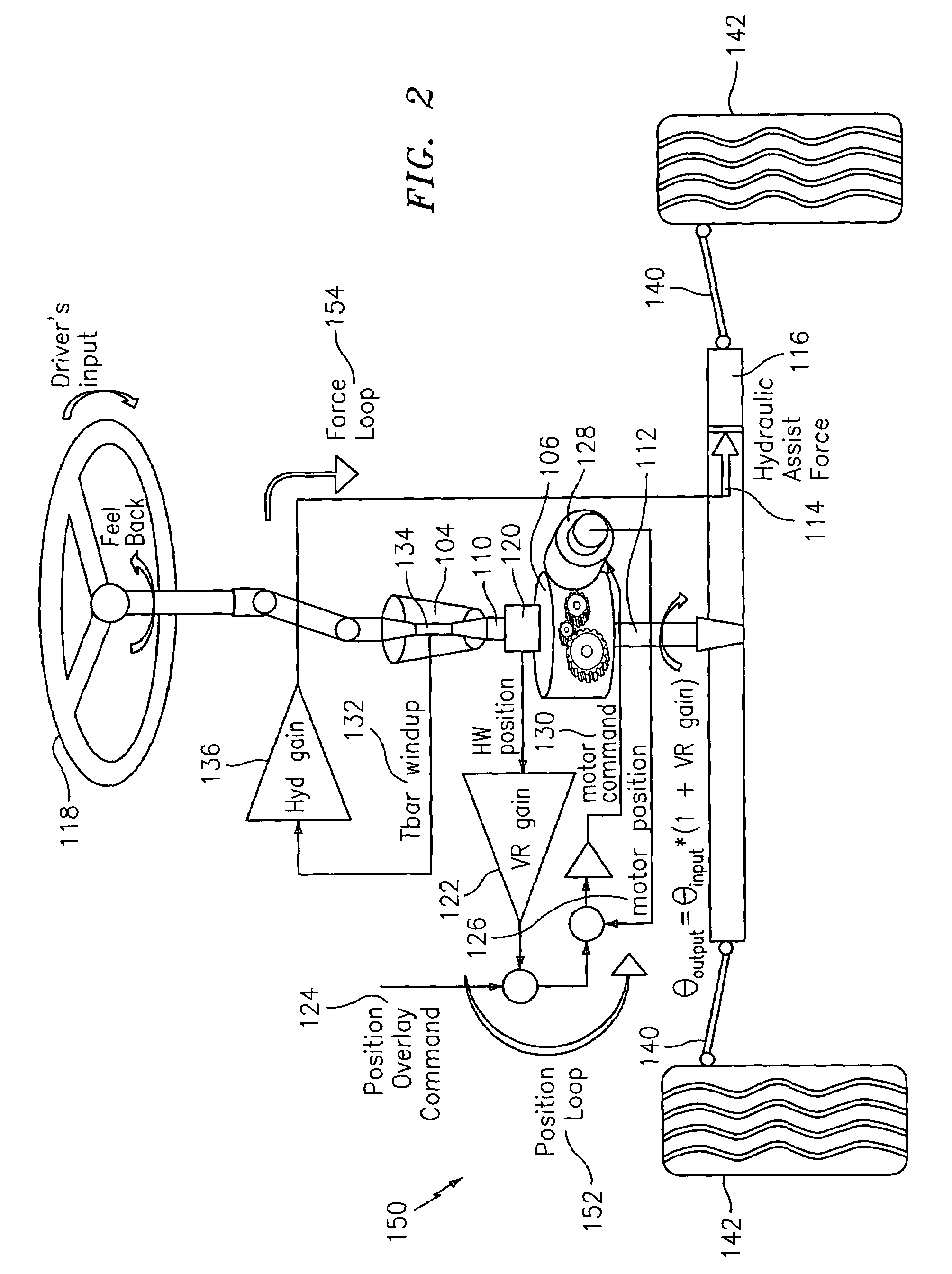Force and position control for active front steering
a technology of active front steering and position control, which is applied in the direction of fluid steering, electric steering, vehicle components, etc., can solve the problems of deteriorating the torque felt by the driver, less reaching capabilities, and other adverse effects
- Summary
- Abstract
- Description
- Claims
- Application Information
AI Technical Summary
Benefits of technology
Problems solved by technology
Method used
Image
Examples
Embodiment Construction
[0026]Embodiments of the steering systems described herein support advantages of autonomous control of the front wheels and achieve acceptable torque feedback with feasible and less expensive components than current applications. The steering systems described herein can therefore be used for future applications. The mechanizations described within at least some of the steering systems described herein can operate under different modes such as steer-by-wire, active front steering, and electric power steering.
[0027]In a mechanically linked steering system, one cannot simultaneously control the position (or force) at both the road wheels and hand wheel. If one chooses to control the force at one end, one will need to control the position at the other end, and visa versa. These control loops, unfortunately, are not independent. The more precise the control on one end has the consequence of a less precise (or desirable) control on the other end. Steering systems are traditionally design...
PUM
 Login to View More
Login to View More Abstract
Description
Claims
Application Information
 Login to View More
Login to View More - R&D
- Intellectual Property
- Life Sciences
- Materials
- Tech Scout
- Unparalleled Data Quality
- Higher Quality Content
- 60% Fewer Hallucinations
Browse by: Latest US Patents, China's latest patents, Technical Efficacy Thesaurus, Application Domain, Technology Topic, Popular Technical Reports.
© 2025 PatSnap. All rights reserved.Legal|Privacy policy|Modern Slavery Act Transparency Statement|Sitemap|About US| Contact US: help@patsnap.com



